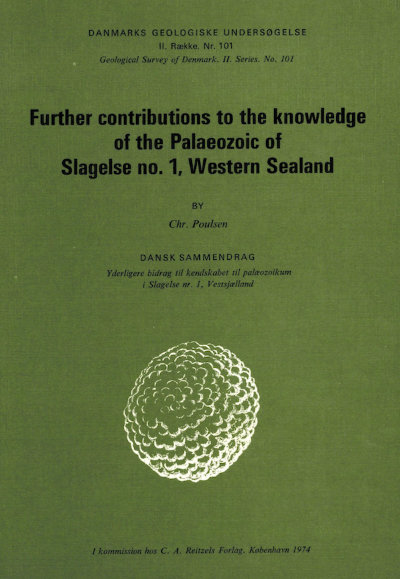Further contributions to the knowledge of the Palaeozoic of Slagelse no. 1, Western Sealand
DOI:
https://doi.org/10.34194/raekke2.v101.6892Abstract
The material described and discussed in the present paper originates from a deep borehole near Slagelse on western Sealand. The lowermost strata have been referred to the Lower Cambrian (Sorgenfrei & Buch 1964 and C. Poulsen 1969). The present paper deals with the succession of strata between the Lower Cambrian and the Upper Permian evaporite series. The sediments in question are: Alum shale (lowermost part possibly Middle Cambrian and uppermost part possibly basal Ordovician), shales and siltstones with Lower Silurian graptolites (Table 2, p. 11), red, silty claystone (Rotliegendes?), and finally grey dolomite and dark grey, thinly laminated shale with Upper Permian gymnosperm pollen and numerous remains of a vigorous vegetation of hepatics.
The description and discussion of the Silurian fossils embrace trace fossils, brachiopods, eurypterids, asteroids, graptolites (e.g. two new species of Dictyonema and a new species of Monograptus), and finally a few vertebrate scales. A study of numerous Silurian specimens of framboidal pyrite resulted in several new observations; the framboids may be explained as primitive pyritized algae.
The Upper Permian microflora contains a very predominant new species of Lueckisporites; the macroflora consists exclusively of new species of hepatics referable to Jungermannites and Gessella n.g.
The Palaeozoic palaeogeography and geological development of the Slagelse region is discussed in connection with a comparison with sections of some other localities.
Downloads
Published
Issue
Section
License
This article is distributed under a CC-BY 4.0 licence, permitting free redistribution and reproduction for any purpose, even commercial, provided proper citation of the original work. Author(s) retain copyright over the article contents.


